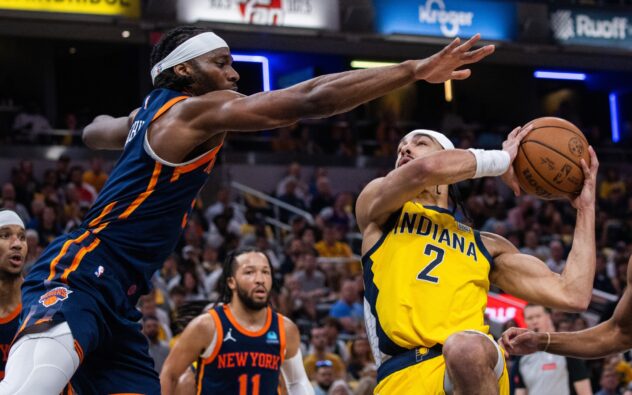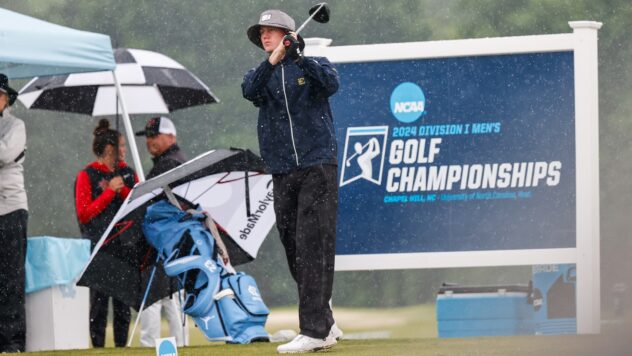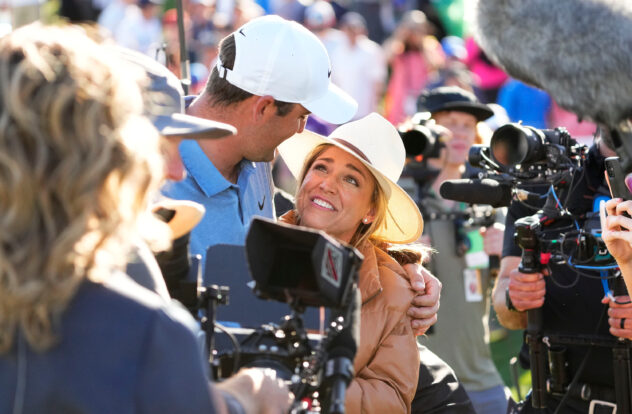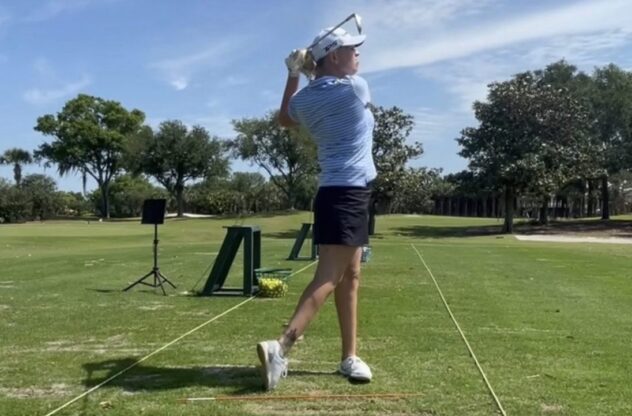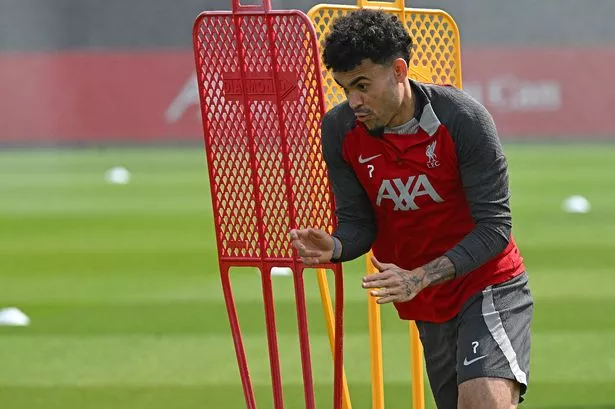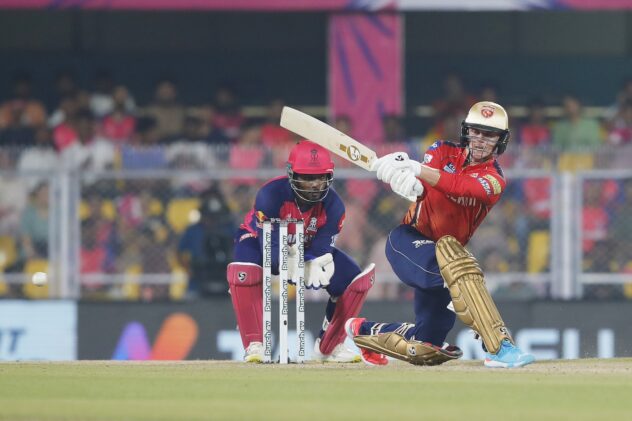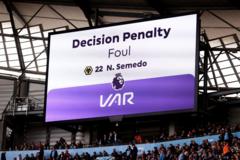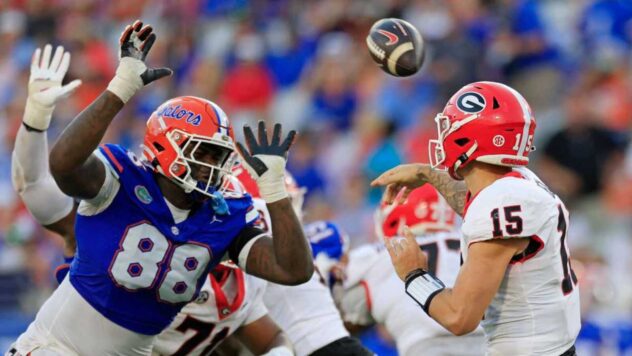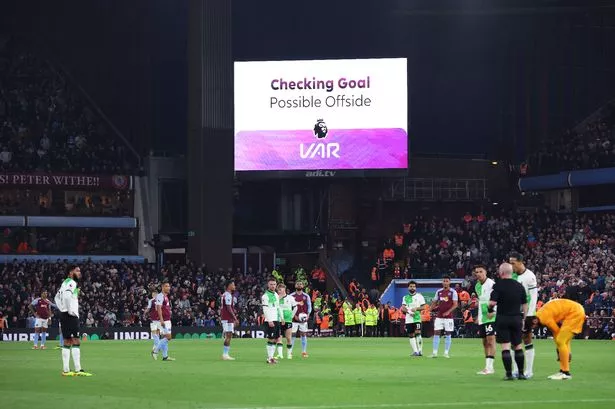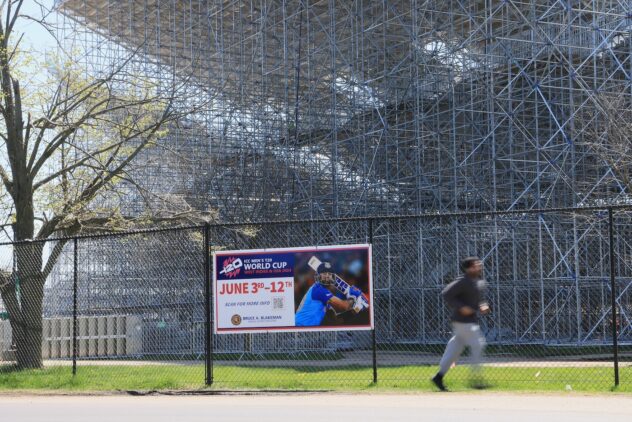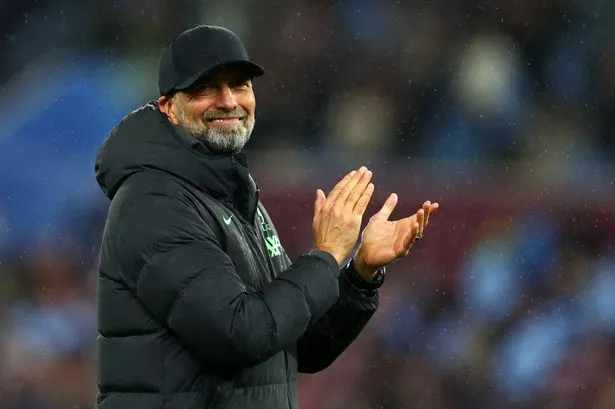Lynch: The Mona Lisa of one-dimensional holes – 17th at TPC Sawgrass – tested something we seldom see at the Players Championship

PONTE VEDRA BEACH, Fla. – Too often, professional golf—in particular the strain presented on the PGA Tour—tilts toward the one-dimensional, not only in the repetitiveness of individual stroke play but in the consistency of course conditions that envelop players every week like a comfort blanket intended to minimize blubbering.
What variety there is exists mostly in the questions asked hole by hole, and even that has been diminished in the modern power game as players bludgeon courses into submission rather than seduce them in the manner of yore. The Stadium Course at TPC Sawgrass still poses its share of nettlesome challenges for the best players in the world, but its iconic 17th hole is the Mona Lisa of one-dimensional golf.
That’s not to say it’s a wholly lousy hole. It’s indisputably entertaining, which is no small matter when it comes to fan engagement, dramatic theater, merchandise branding and hospitality sales. It’s daunting too, a necessary stress test in the closing stretch of tournament play. In normal circumstances, it’s not particularly difficult, even for recreational chops (it’s the shortest hole on the course and the green is huge). But No. 17 is woefully lacking in the one aspect that makes a golf hole truly interesting: options.
Unless you consider “live vs. die”” to be a real option.
Great golf holes offer a choice of routes that depend upon a player’s skill, confidence or courage. On 17 of the holes at TPC Sawgrass, a poor swing leads to car crash golf—injurious, but offering the possibility of recovery. But the penultimate hole at Pete Dye’s creation is plane-crash golf, where a poor swing is fatal. That’s why the least interesting hole here was the focus of attention when high winds buffetted the Players Championship, producing more squealing splashdowns than a kid’s water slide.
In a game of numbers, some of those we witnessed at Sawgrass felt like golf seen through a funhouse mirror, and it made for one of the most beguiling days in recent memory on Tour. Sure, weather conditions on Saturday were extreme, but it took that extreme to expose just how much torpor has been induced by the norm.
Among the spectacles that were awesome to behold in whipping winds were Brandel Chamblee’s mane and Justin Thomas’s 69. JT’s caddie, Bones Mackay, told me Sunday morning that it was among the top-five rounds all-time he has ever carried for, a captivating mix of sublimely flighted shots and clutch putts, all while knowing he had been diddled by the draw.
Twice during his round, Thomas hit pitching wedges 185 yards, while delivering a glorious 5-wood into the 18th green from 193 yards. His scorecards show two 3s on 17, but numbers don’t do justice to the situation. “When you have a 7-iron on that hole and it’s into off the left, it’s a lot more fun when someone tells you a story of them doing it versus you have to it,” he said.
Players: Leaderboard | How to watch | PGA Tour Live on ESPN+ streaming
Playing alongside Thomas, Rory McIlroy also hit 7-iron to the 17th, landing it on the front of the green 123 yards away. Asked afterward how far he normally hits that club, he replied: “185. It’s crazy.”
One group ahead, Brooks Koepka had hit an 8-iron into the 16th that flew 205 yards in the air. He turned around and struck the same club into the wind on 17. It flew 105 yards, coming up well short of dry land. He just laughed.
“It was 138, and I hit 118 front, which is really the only number we were kind of looking at,” said Dustin Johnson. “I hit a pretty good 8-iron with a low draw.” Pressed on how far that shot would usually travel, he said 165 yards. “It was kind of a chip,” he said with a shrug.
The 17th demanded a creativity that is somewhat lacking in its design, something beyond stock shots with stock clubs. Even with that, reward wasn’t assured. Koepka saw his playing partner Scottie Scheffler punch a 6-iron to the back pin, which ended up rinsed over the green. “You flight it low enough like Scottie did, the grandstands, the screen, everything in the back, you almost flight it too low and the wind doesn’t touch it,” he said. “It’s a tough one.”
Tough, but not unfair. Players who spoke after Saturday’s shenanigans unanimously said the set-up was difficult (brutally so) but had not crossed the line, a gracious sentiment that is so often denied the USGA.
The essential nature of the challenge was best summed up by Keegan Bradley, who drew a stark comparison between two 9-irons hit in his round. On the 12th, it was from 95 yards. Four holes later, the same club flew 206 yards. “To me there’s no yardage,” he said. “It’s just the trajectory of your ball, whatever club you can get to fit that window, that’s the shot.”
And that’s why the third day (albeit just the first and second rounds) of the Players was so wildly engaging. Every week the PGA Tour tests execution, but Saturday at TPC Sawgrass tested both execution and imagination—and many who are well-equipped for the former were found lacking in the latter.
Bubba Watson shapes his shots more than anyone on Tour and carded a stout 68. That could make one wonder why his imaginative approach hasn’t translated to a better record in the Open Championship, since links golf ought to be an inviting canvas for an artist of his caliber. But Sawgrass was very soft and Watson’s ball mostly stopped where it landed, whereas he has proven poorly wired for the fickle bounces of the ground game overseas.
Golf is a capricious game and it’s impossible to legislate chance out of it. Tournament organizers have no interest in guaranteeing equality of outcome, but they cannot even ensure equality of opportunity. In course conditions, sure, but Mother Nature’s writ overrules that of the PGA Tour’s chief referee, even in Ponte Vedra Beach. Whoever wins the 48th Players Championship—presumably on Monday—he might reflect that the most crucial stretch of his week was spent in a hotel room, sheltered from the less favorable side of the draw. Any victory will be hard-earned, but there’s no shame in hoping the eventual champion was among those faced and aced a test that is administered all too infrequently these days.

